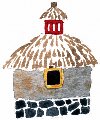
 |
Climate control without complexity |
This is the html version of a lecture which illness prevented me from presenting in Antwerp, at the conference "Goed begonnen is half gewonnen. Duurzaam (ver)bouwen van musea en depots" (Well begun is half won. Durable (re)building of museums and stores), 19 November 2015. This lecture contains reworked material from elsewhere on this website, but it is assembled here to serve a consistent theme: the inhibiting effect of museum environment standards on rational design for economic yet safe preservation.
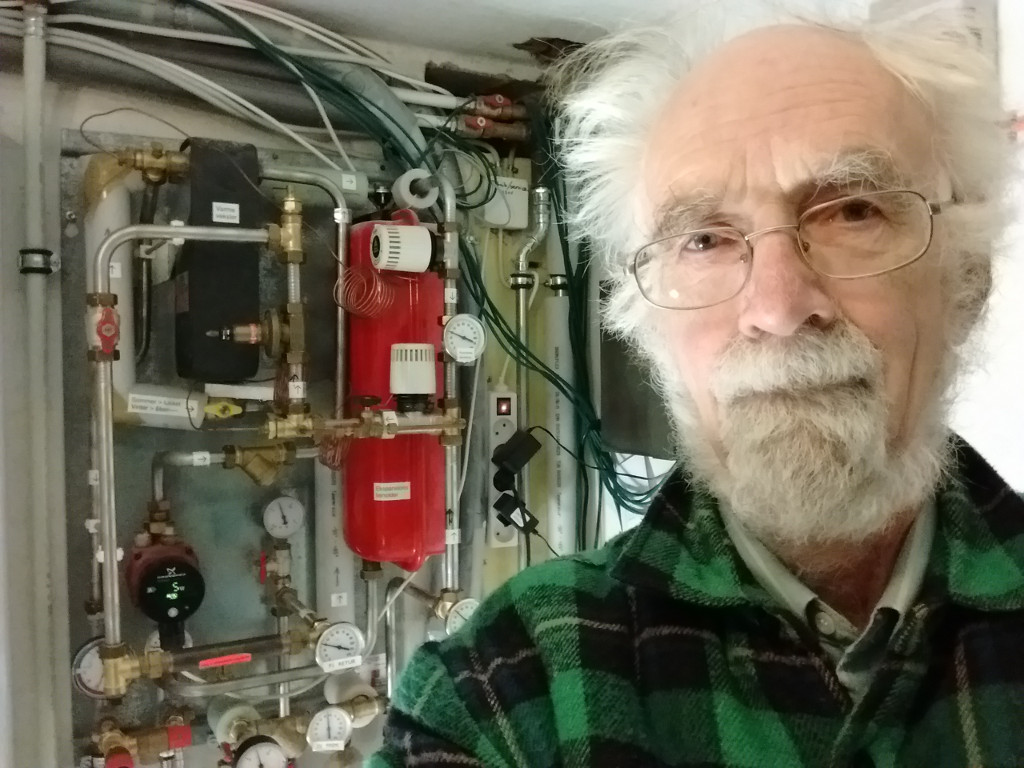
I'm sorry not to be here in person in Antwerp, but here I am in the cellar of my house, posing before an entirely orthodox Danish heating and ventilation control panel.
We are so bombarded with press releases on the wonders of the "intelligent house" that it seems absurdly old fashioned and romantic to resist what seems to be an inevitable development in civilisation.
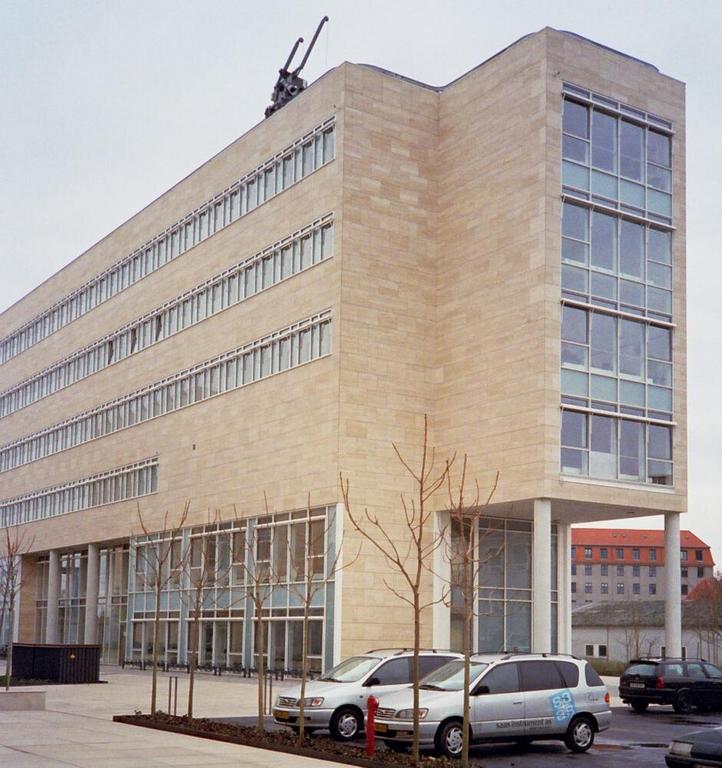
But let us keep calm in the face of the digital revolution, and just pick the useful bits.
There is an archive behind the blank piece of wall interrupting the symmetry of Copenhagen university. The archive follows passively a temperature which is decided by the uncontrolled competition between the inside temperature and the outside temperature, each trying to penetrate carefully calculated thicknesses of insulation.
The increased temperature over ambient results in an inside RH which averages close to 50%. Its stability is mostly attributable to strong humidity buffering by the archived materials.
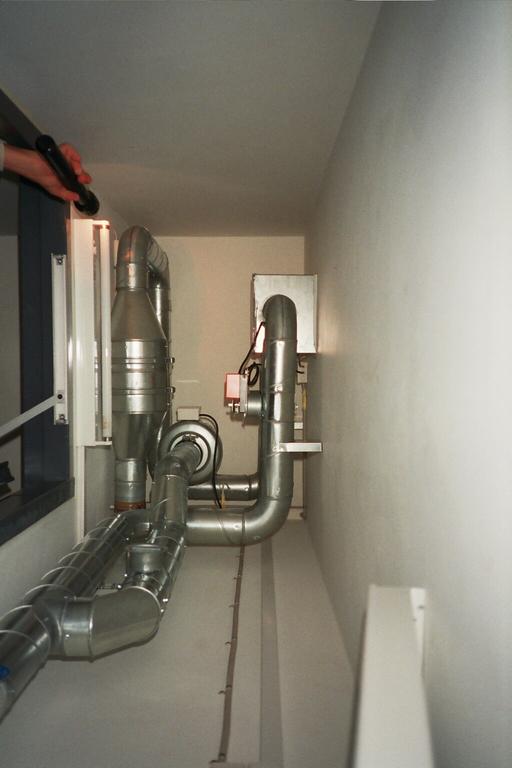
However, the RH is fine-tuned by pumping in outside air when its water vapour content is, by accident of the weather, good for pushing the interior humidity towards the target.
So the only mechanical and electrical control mechanism is a fan which pumps in filtered outside air occasionally. This is controlled by a computer connected to a weather station. So there is modernity, but carefully selected and pared down, and fail safe.
This is the theme of this lecture: much can be achieved by cunning use of modern possibilities without slavishly following the trend to complexity.
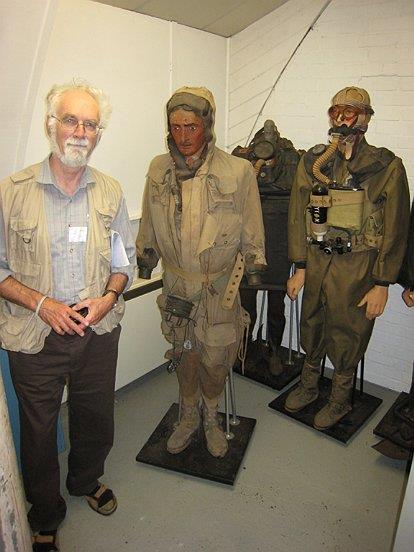
Photo by Poul Klenz Larsen
Humans are very picky about their temperature and also need a lot of fresh air to provide oxygen and to disperse the large amount of toxic and embarrassing gases which their metabolism produces. The need for ventilation enforces complicated technology to ensure human comfort.
Museum collections also produce harmful vapours, but in much smaller quantity, easily absorbed by a carbon filter acting on recirculating air. So air conditioning for museum storage is a much simpler problem.

There is, however, a major hindrance to introducing simplicity. It is difficult to persuade museum administrators to accept simple climate control ,because the various players in the building commissioning process scarcely understand each other. The degree of specialisation we have developed has damaged our ability to do simple things. Think that two hundred years ago, everyone knew how to build a house.
We think we can overcome this handicap by setting up an expert group to develop environmental standards which we can apply universally without worrying why.
It turns out that the standards development process is in turn handicapped, to an extent which seriously impedes the spread of simplicity and reliability to museum storage spaces.
The second theme of this lecture is that the institutions making museum environmental standards have let us down, producing stiffly worded, complicated and pseudo-authoritative documents which are over-prescriptive and under-researched, given the huge variety of materials and techniques used by humans over millenia.
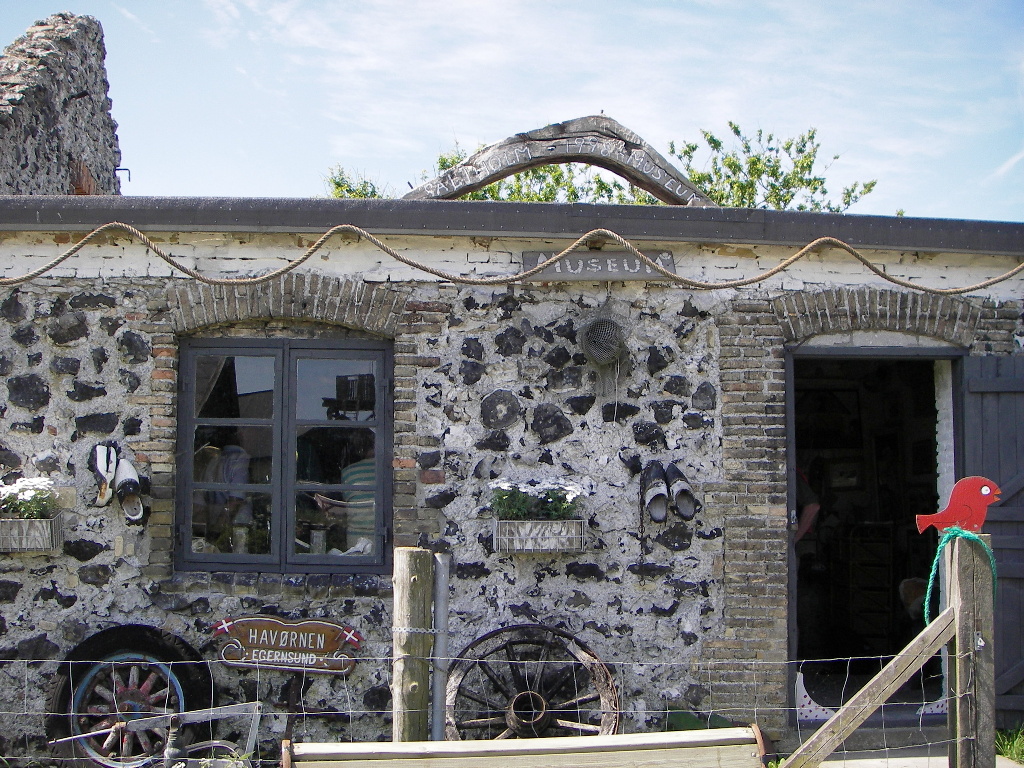
I must at this stage point out that most museums, and their wealth of interesting artifacts, lie out of range of the debates taking place in our well endowed big city museums, which provide the delegates to the standard-making process.
Saltholm museum, on a low chalk island off the coast of Copenhagen, is most easily reached by kayak. It is typical of the tiny local museums which guard the strange relics of bygone industries and lifestyles. Their air conditioning is an openable window.
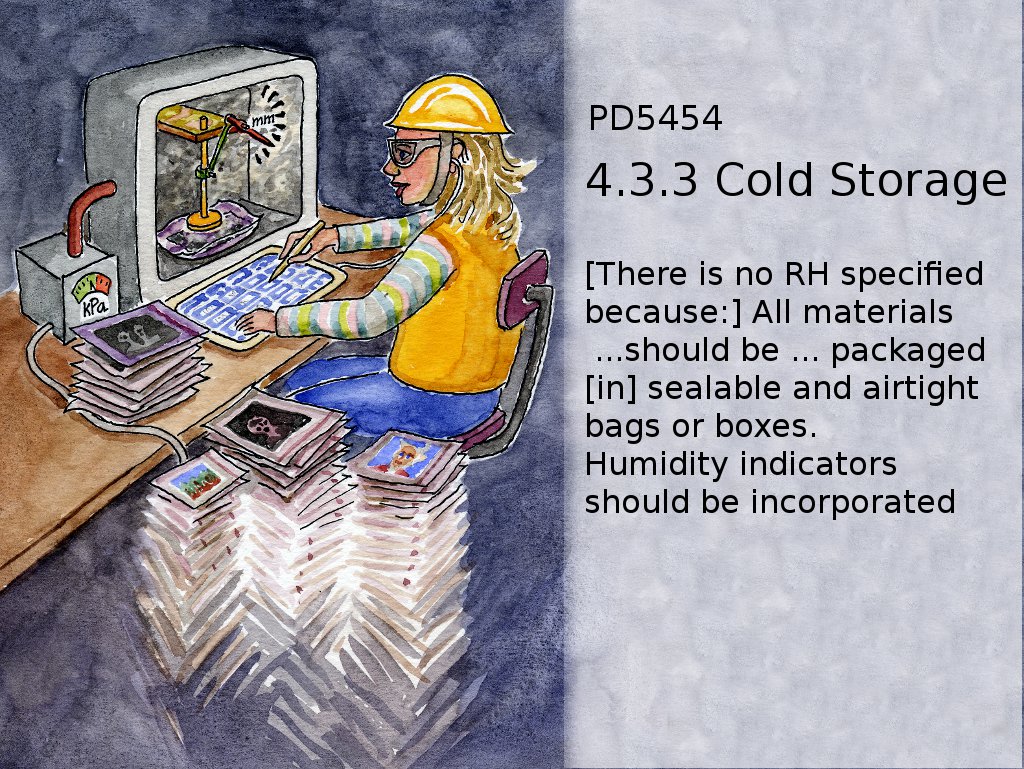
The standards experts live on a parallel planet where materials, people and money are readily available to follow an intricate but unnecessary protocol.
Here is an example from the standard for archives PD5454:2012, a British developed standard but now a European standard, without further refinement, or consideration that Europe extends into much warmer climates.
For cool storage the standard gives no RH recommendation, because all materials are expected to be stored in sealed envelopes with individual humidity indicators.
It is so much easier to control the RH of the entire store room that one has to wonder at the competence of the experts, who seem unaware that movie film has for many decades been stored at minus twenty degrees, with humidity control of the room, while the film is held in ordinary boxes and cans.
Yet this standard not only advises, but actually controls us through the subtle transformation of the word "recommendation" to the word "requirement" as the advice filters down through the hierarchy of the museum administration and the building committee.

Let us look now at the temperature range recommended by PD5454:2012.
The minimum temperature for valuable collections is set to thirteen degrees. One of the arguments for this is a single published paper about phase separation of the components of freshly made beeswax seals, when the temperature drops below this number.
It would be good if standards were conservatively based on multiply confirmed experiments and assessment of the relative importance of individual materials in collections.
I suspect, however, that this limit is a face-saving exercise, because it provides an envelope of permitted temperature which is identical to the total range of the more complicated and stringent multiple alternatives allowed by the previous edition of the standard.
The real problem with this exactly defined lower limit is that it is not attainable by entirely passive temperature control in northern Europe and thus, if obeyed slavishly, forces full air conditioning, which the revised standard is supposed to allow us to avoid.
 In the olden days of preventive conservation the simple rules proposed by Garry Thomson prevailed. He worked in one of the world's most visited art galleries, so the standard is mainly about human comfort, with just the RH kept moderate and constant for the sake of oil paint on glue grounded canvas.
In the olden days of preventive conservation the simple rules proposed by Garry Thomson prevailed. He worked in one of the world's most visited art galleries, so the standard is mainly about human comfort, with just the RH kept moderate and constant for the sake of oil paint on glue grounded canvas.
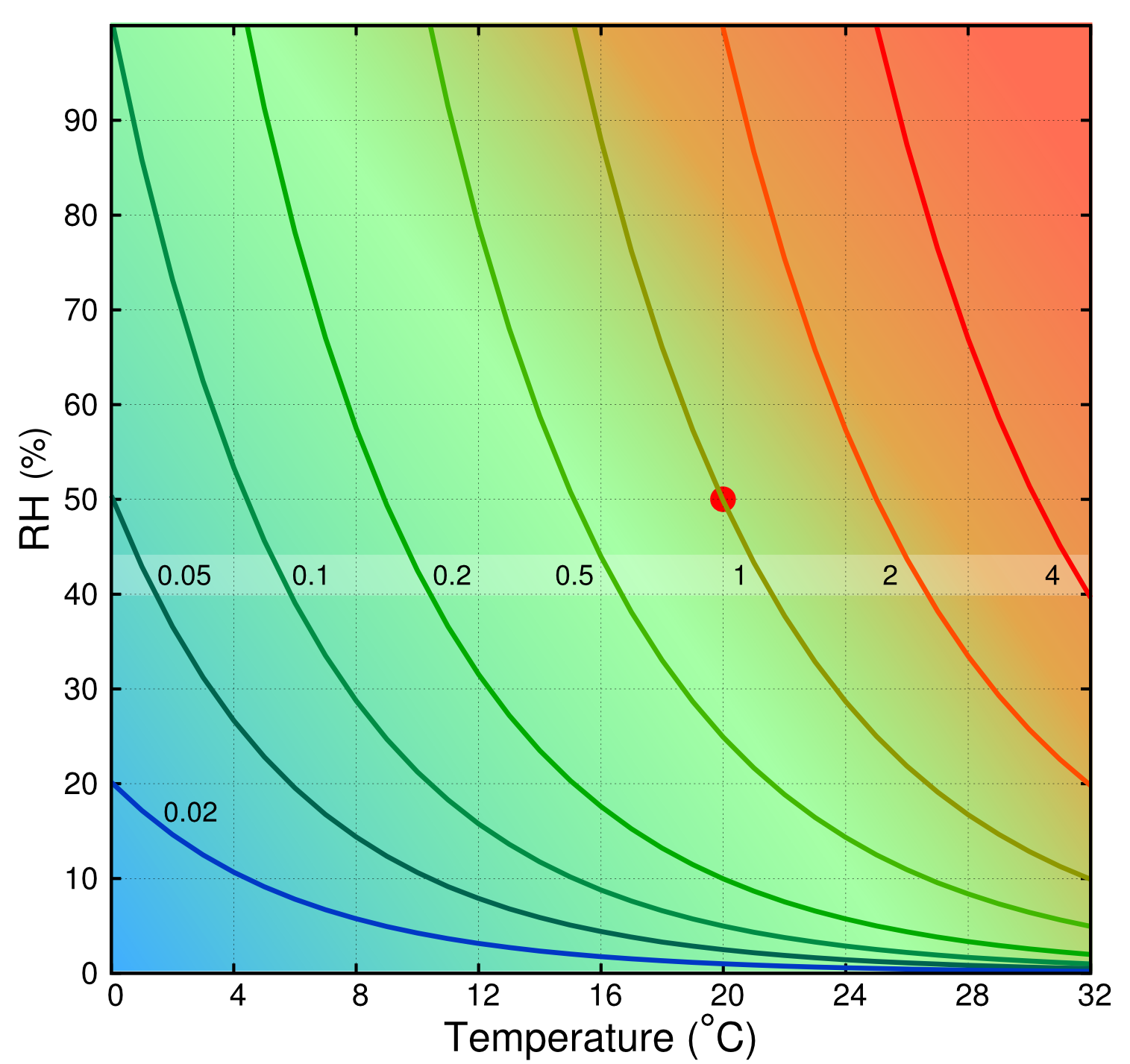
To build for artifact comfort requires a different approach, elegantly sketched out by Don Sebera, a chemist at the US National Archive.
On this diagram of relative humidity and temperature, the climate in Garry Thomson's art gallery is near the red spot and the line passing through it is arbitrarily assigned a reference deterioration rate.
The lines to the left of this mark indicate the reduced deterioration rate as the temperature goes down. The tilt of the lines shows the separate beneficial influence of a low relative humidity.
Reduction of relative humidity only becomes an effective preservation strategy when it is below about fifteen percent, where the lines of equal deterioration rate become more horizontal. However, by this point many laminated objects will have cracked up. So a low temperature is the way to go.
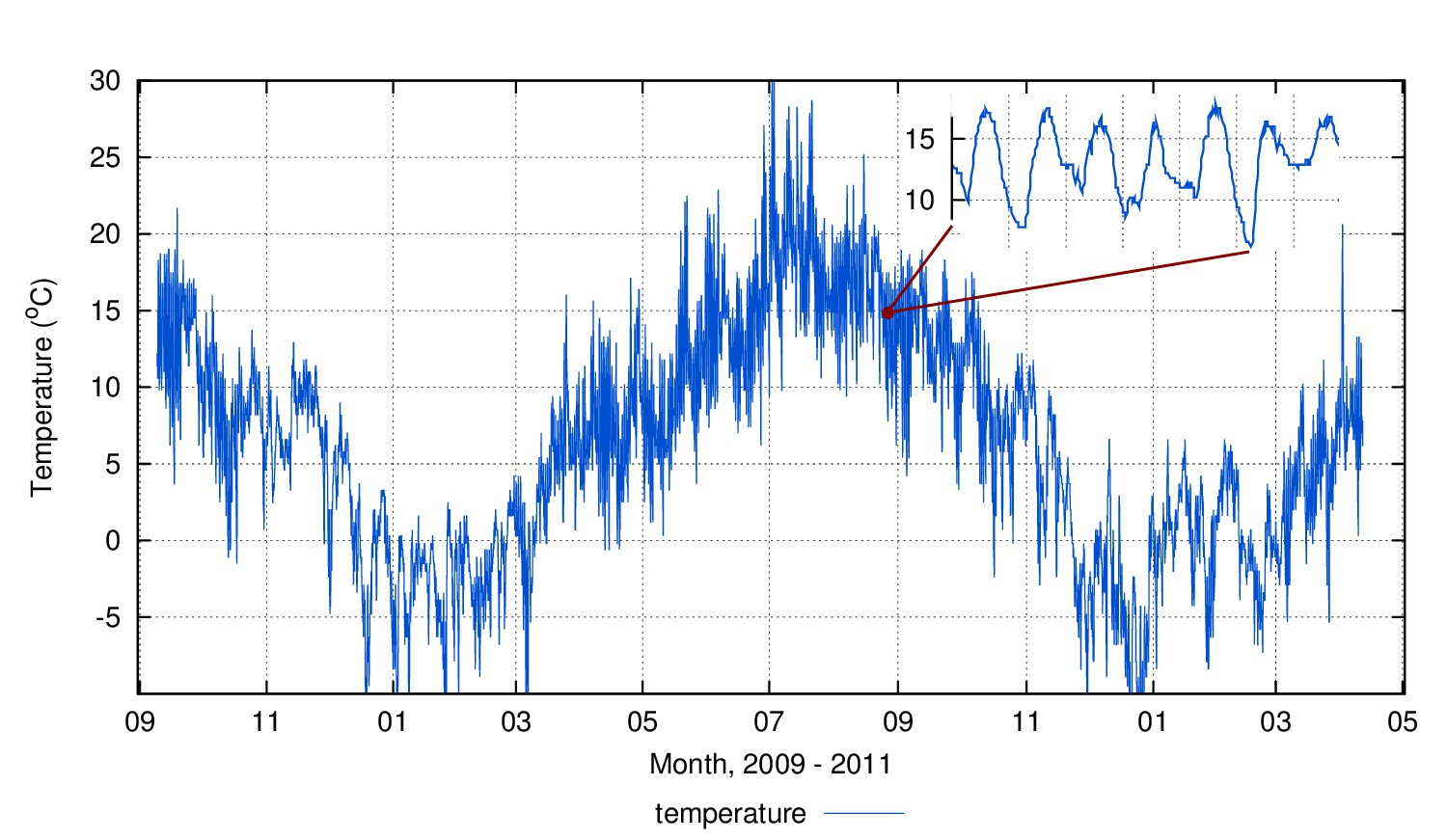
Let us now see how far we can reduce the temperature in a storage building without deliberate cooling. Here is the northern European temperature cycle, as exemplified by data for the ancient city of Ribe in southern Denmark.
There are two superimposed cycles - an annual cycle, seen by defocusing your eyes, and a daily cycle, which is spread out in the insert on the top right.
There is variability in the detail of both cycles but the general progress of the weather is consistent day to day and year upon year.
Indoors, this temperature cycle is considerably moderated, indeed the daily cycle can be entirely flattened.
The expert committee joins in the discussion at this point, suggesting that a heavily built structure is advisable to dampen the temperature variation.
6.3.1 Thermal stability The construction should be of sufficient density and have air infiltration rates low enough for the temperature and RH to remain stable and within the recommended ranges given in 4.2 for a minimum of 24 hours in the event of exceptional weather conditions or the failure of environmental control equipment.
COMMENTARY ON 6.3.1 High thermal inertia is recommended irrespective of whether natural means or air-conditioning is used in the construction to achieve environmental stability.
Let us examine this assertion in detail.
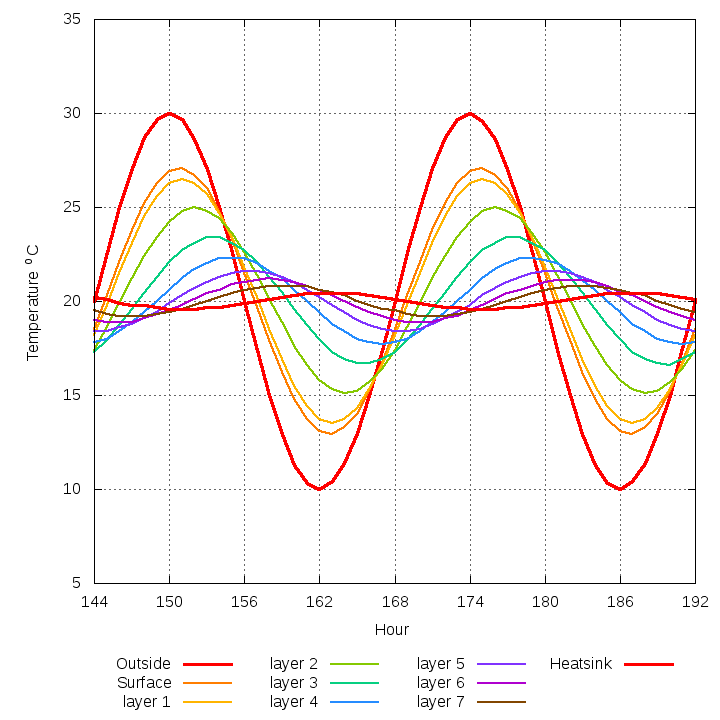
Here is how the daily variation in temperature is attenuated by a thick brick wall. And yes, it works as recommended.
The outside temperature follows the wide ranging red curve. The bricks within the wall absorb some of the heat diffusing through from the warm day outside but also transmit heat further in. This gives the curves of diminishing temperature range, which also show a delay in heat transmission.
The inside surface, the flattest curve, sees a much reduced amplitude, with the weak maximum temperature delayed by half a day.
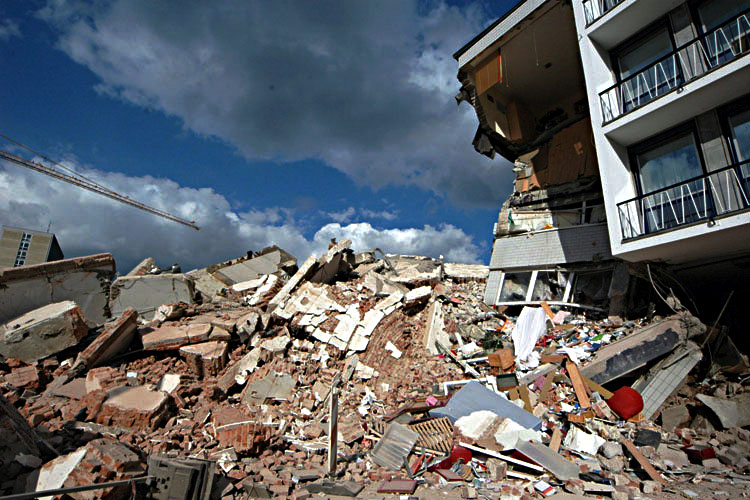
Photo: Der Spiegel
This method of temperature moderation by massive construction has its downside. It resulted in complete collapse in the case of the Cologne City Archive, which fell heavily into the excavation for the underground railway nearby. It took a year to excavate the archives from the massive masonry fragments.
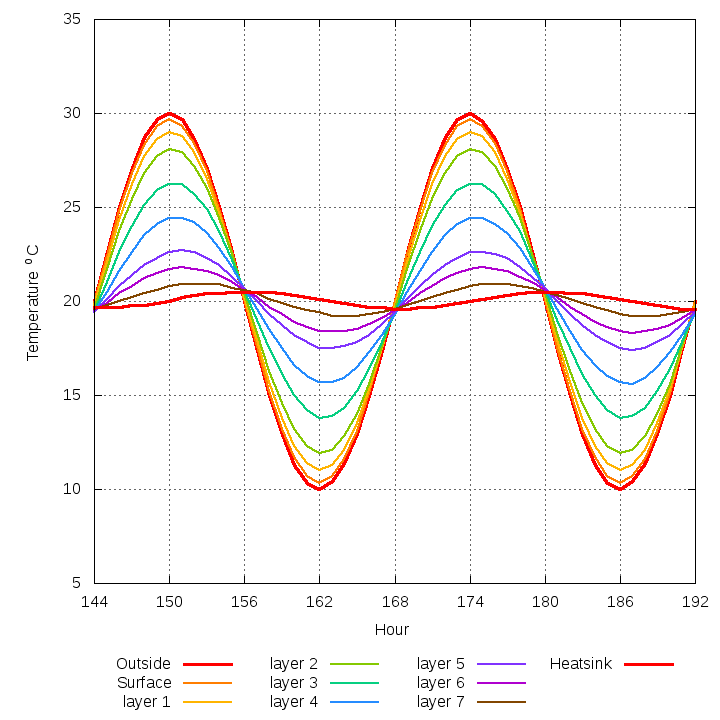
But suppose now that the archive had been lightly built, but with good thermal insulation, suitable for an earthquake zone. Amazingly, this construction would work just as well.
The inside temperature cycle shows the same gentle variation as with the massive wall; the only difference is that the peak inside temperature now occurs only six hours delayed from the outside maximum.
I must add that there are some complexities to the argument, such that the high thermal capacity model is well suited to inhabited spaces with internal energy sources such as lighting and people.
However, for a museum store the lightweight solution is by far the cheapest, and entirely adequate.
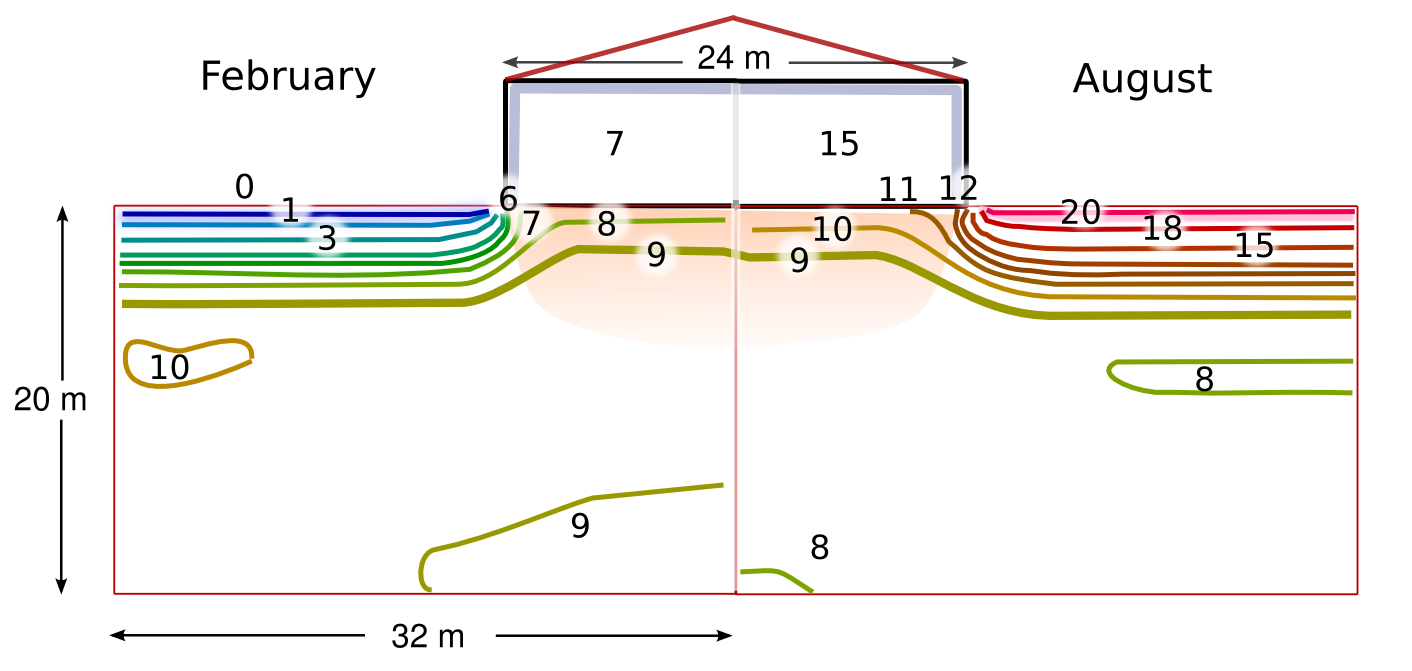
Can we moderate the annual temperature cycle in the same way? Actually we can, in both the ways already described, just with more bricks or more insulation.
However, the massive walls would have to be about four metres thick. In the case of the insulated building the insulation would have to be so effective that even a tiny heat source, such as a few people per day searching for an object to retrieve, would increase the temperature too much and spoil the aim to reduce chemical deterioration.
So the way to optimise the building for passive storage is to combine the two concepts of high thermal resistance through insulation, and high thermal capacity through weight of material.
The obviously economic way is to put a lightweight insulated building, able to suppress the daily temperature cycle, on top of a massive heat sink to moderate the annual cycle. The cheapest way to do this is to use the ground below the building.
The computer model shown here, which has been confirmed in a general way by measurement of the built structure, shows how the ground beneath the building becomes, after a period of several years, effectively a part of the building, providing heat storage on the scale of a whole year.
The diagram shows on the left the temperature gradient from air to deep underground in the coldest month. On the right is the gradient in the warmest month. The contours beneath the building remain much more constant than under the open field.
Notice that the edge disturbance does not spread far towards the centre of the building. Little insulation is required at the edge and none in depth, so there is no need to excavate for an insulated artificial thermal mass.

This division of labour between the superstructure and the floor is remarkably effective.
The fuzz of closely clustered curves shows the temperature at various heights within the single high space of the museum store in Ribe. The brown trace close to the zero line shows the total span of the temperature from floor to ceiling. This never exceeds three degrees. It is, as one would expect, bigger in the summer, but the consequent RH non-uniformity will never reach 10%.
It is remarkable that when the floor is cooling the space in summer it is still effective against the natural tendency for hot air to accumulate high up. But the good thermal insulation plays a vital role in keeping this uniformity.
There is, however, one serious problem with this elegantly simple solution to museum storage - the minimum temperature is below the magic thirteen degree limit.
This would be so everywhere north of the Alps. It seems a serious point of discussion with the standard committee: how serious is the argument for the thirteen degree temperature limit? But there is no quantitative discussion in the formal document, and no opportunity for public discussion before the preparation of the next version of the standard.
The freely wandering temperature of the Ribe store requires dehumidification, otherwise the RH, like the temperature, would eventually come close to the annual average value, which is in the high seventy percent range in northern Europe.

An alternative way of reducing the RH, which will conform with the standard temperature limit, is to warm the building, just a bit, in winter only.
The Suffolk County archive in eastern England, in a similar climate to Ribe, was warmed to fifteen degrees in winter, without explicit RH control, but thanks to the powerful humidity buffering by the archived papers, the space holds a nearly uniform RH throughout the year.
It turns out to be very easy to maintain a RH well within the boundaries recommended by the standard, provided the air exchange rate is kept very low - less than 0.1 changes per hour.
The slow exchange of air reduces the influence of the varying water content of the weather so much that humidity buffering by absorbent materials within the store room maintains a steady RH.
This approach to air conditioning archives and museum stores can be summarised simply:
If the temperature is allowed to move in an annual cycle under the influence of the outdoor climate, but with considerably reduced amplitude, the relative humidity can be controlled with much reduced complexity and energy use.
In particular, dehumidification will never be necessary.
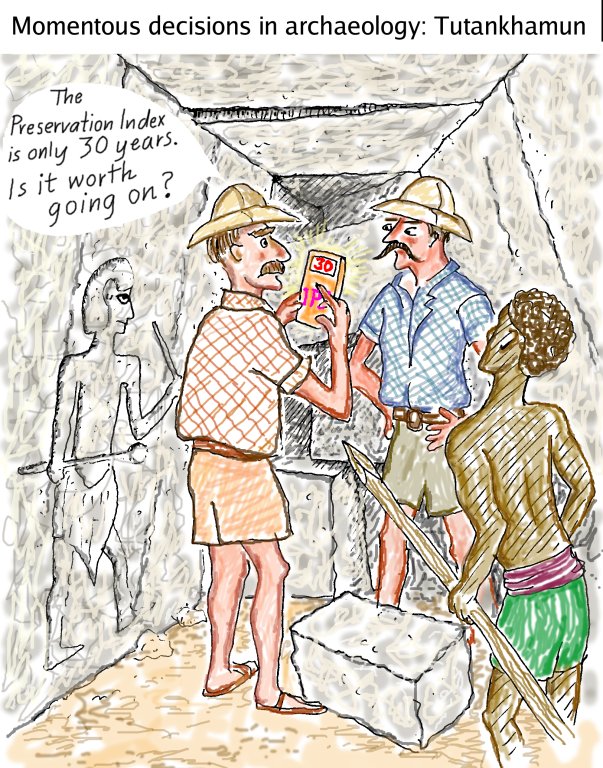
However, it has proved very difficult to persuade the people who commission new, or refurbished storage rooms that simplicity is also safe.
The underlying theme of this talk is the over reliance of commissioning authorities on the authority of museum environmental standards. The result is a timid adherence to established, expensive and energy consuming air conditioning techniques.
The European standards have come a long way from the durable simplicity of Garry Thomson's advice to keep about fifty percent RH and twenty degrees.
Now, elaborate calculations are embodied in standards, and there is unwarranted precision in the acceptable limits to environmental parameters. This hinders the acceptance of simple yet safe design of storage conditions.
Those of us who have participated in the development of modern standards have experienced the dead weight of protocol, the tedium of committee meetings, the ornate, pseudo-legal language, as well as experiencing the tendency of individual forceful characters to dominate the development of a standard.
The solution that I see is to adopt a wikipedia-style, open source development process, where anyone can modify a draft standard until, at some date, it is frozen as the definitive version, for five years, while the wiki continues to evolve to the next iteration.
Open access and open source concepts are gradually infiltrating science publishing. Let us work to open up the standards development process in the field of conservation.
Tim Padfield, 18 November 2015

This work is licensed under a Creative Commons Attribution-Noncommercial-No Derivative Works 3.0 License.